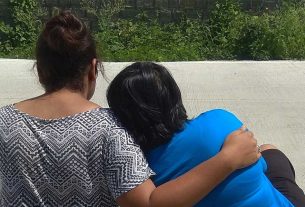He has been appointed as the Prime Minister of the country for the fifth time.
By Supriya Mehta and Mrunmayee Kulkarni
Ranil Wickremesinghe of the United National Party (UNP) has been sworn in as Sri Lanka’s next Prime Minister (PM) today.
PTI reported that Ranil Wickremesinghe met the President, Gotabaya Rajapaksa, on May 11 evening, before Rajapaksa addressed the nation at 9 pm. Gotabaya had nominated three ministers for the post of PM and during his address, he mentioned that he will be appointing a new government within a week.
Mahinda Rajapaksa, the former PM, congratulated him on twitter:
Wickremesinghe has been the PM four times before this. In his last term, he was fired from his post in 2018, by then President Maithripala Sirisena and then reinstalled after two months during a political crisis.
The UNP has just one seat in the country’s 225-member parliament.
In April, over 40 Member of Parliament (MPs) belonging to 11 different parties removed their support from the coalition government and started working independently. “These 40 MPs hold a lot of power, whichever party they side with might make the new cabinet,” said Marlon Ariyansinghe, a SriLanka-based journalist. Reports said Wickremesinghe has the support of several leaders from the main opposition party Samagi Jana Balawegaya (SJB).
“The president needs someone who can win the confidence of all the parties, especially the opposition leaders,” said Marlon.
He said the president might form an interim government for six months as the country is in talks with the International Monetary Fund (IMF) regarding the economic crisis.
Sri Lanka is facing a massive economic and political crisis. Due to a huge fiscal deficit during the Covid pandemic, President Rajapaksa had reduced taxes to stimulate the economy. The policy backfired, leading to a loss of government revenue. To pay off its growing debt, Sri Lanka had to use its foreign exchange reserves. From $6.9 billion in 2018, the reserves fell to $2.2 billion in 2022. This caused a drastic increase in fuel import prices, which led to high prices of other essentials as well.
The president declared a national emergency on May 6, and a curfew has been imposed since then. It was lifted around 6:00 a.m. Thursday morning and re-imposed at 2:00 p.m. It will again be lifted at 6:00 a.m. tomorrow.
Prime Minister Mahinda Rajapaksa resigned on May 9. The country was put under lockdown after the events of Monday, wherein around eight people were killed, 88 vehicles and 100 houses belonging to politicians or people who were connected to politicians were damaged, said Marlon.
The demonstrators are alleging that the protest was peaceful but government action turned it violent. Buddhi Prabodha Karunaratne, a protestor, was hospitalised due to tear gas-induced asthma.
Nuzly, another protestor at “Gota-go-gama” camp, called it ‘state-sponsored terrorism’. He said, “Prime minister’s and state Minister’s goons came and assaulted the peaceful protestors as the PM had to resign because of the peaceful protest.”
Several protest sites were set up by the protestors. The first protest site, set up in front of the Presidential Secretariat was named “Gota-go-gama”. The second site in front of Temple Trees, the residence of the PM, was named “Myna-go-gama”, said Chehan Jayasuriya, a local.
After the violent protests, the government deployed the armed forces and they have been ordered to open fire at anyone looting public property or causing harm to others. Currently, the streets of Colombo are filled with military personnel, said Nuzly
The Fort Magistrate court has issued a travel ban on ex-PM, Mahinda Rajapaksa and 16 other MPs including MP Namal Rajapaksa and MP Johnston Fernando, amidst the crisis. They are under investigation for the attacks on the protest sites on Monday.
Reports mentioned that the opposition SJB leader, Sajith Premadasa, was ready to form a new government if Gotabaya resigned from his post. However, he has refused to resign. He has said that he will amend the constitution to give up some of his executive powers to the Parliament after a stable government is formed.
The protestors are unhappy with the new prime ministerial candidate. “His party barely won one seat in the last election,” said Nuzly. “What we really want is for the President to resign.”




